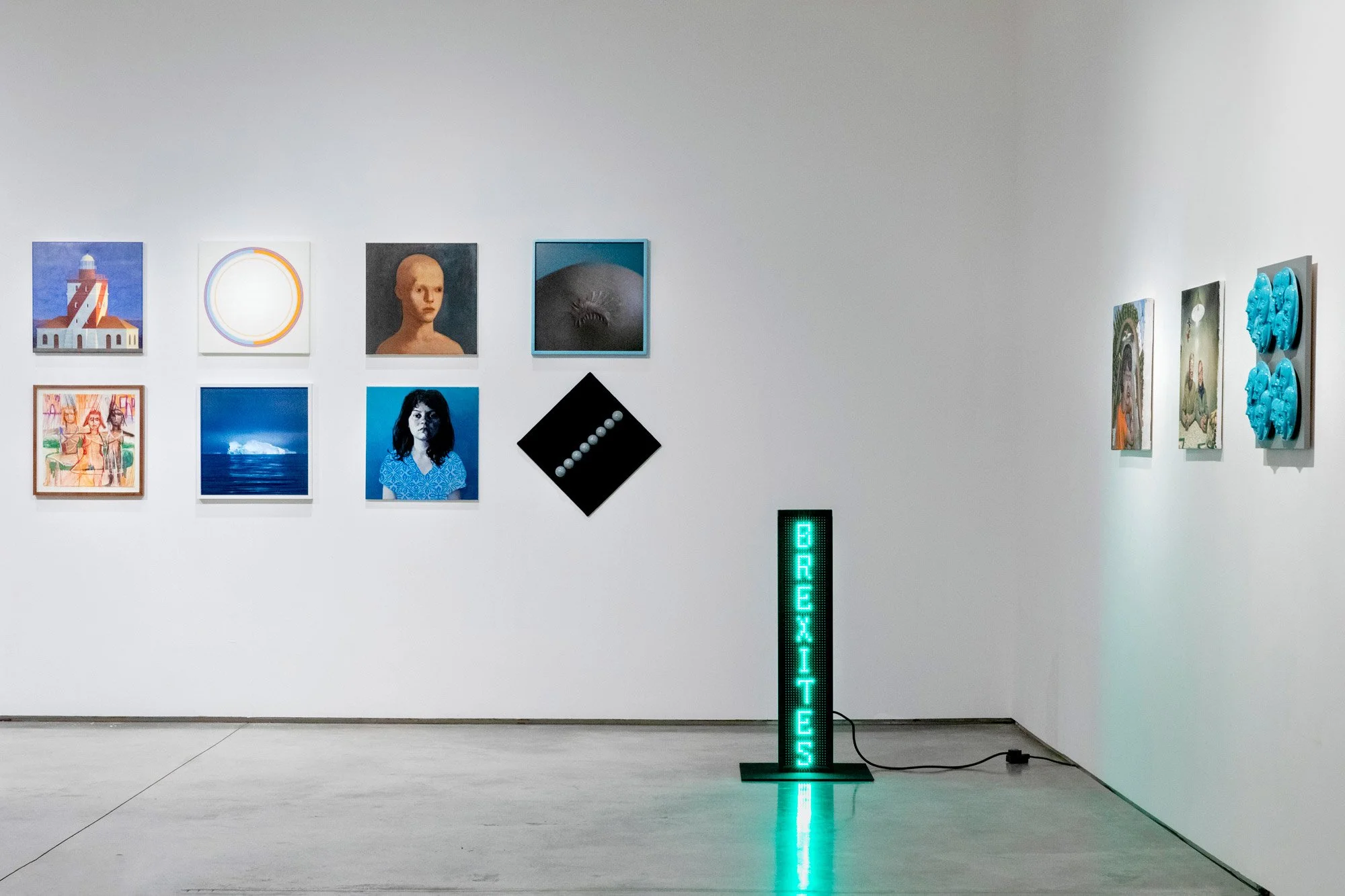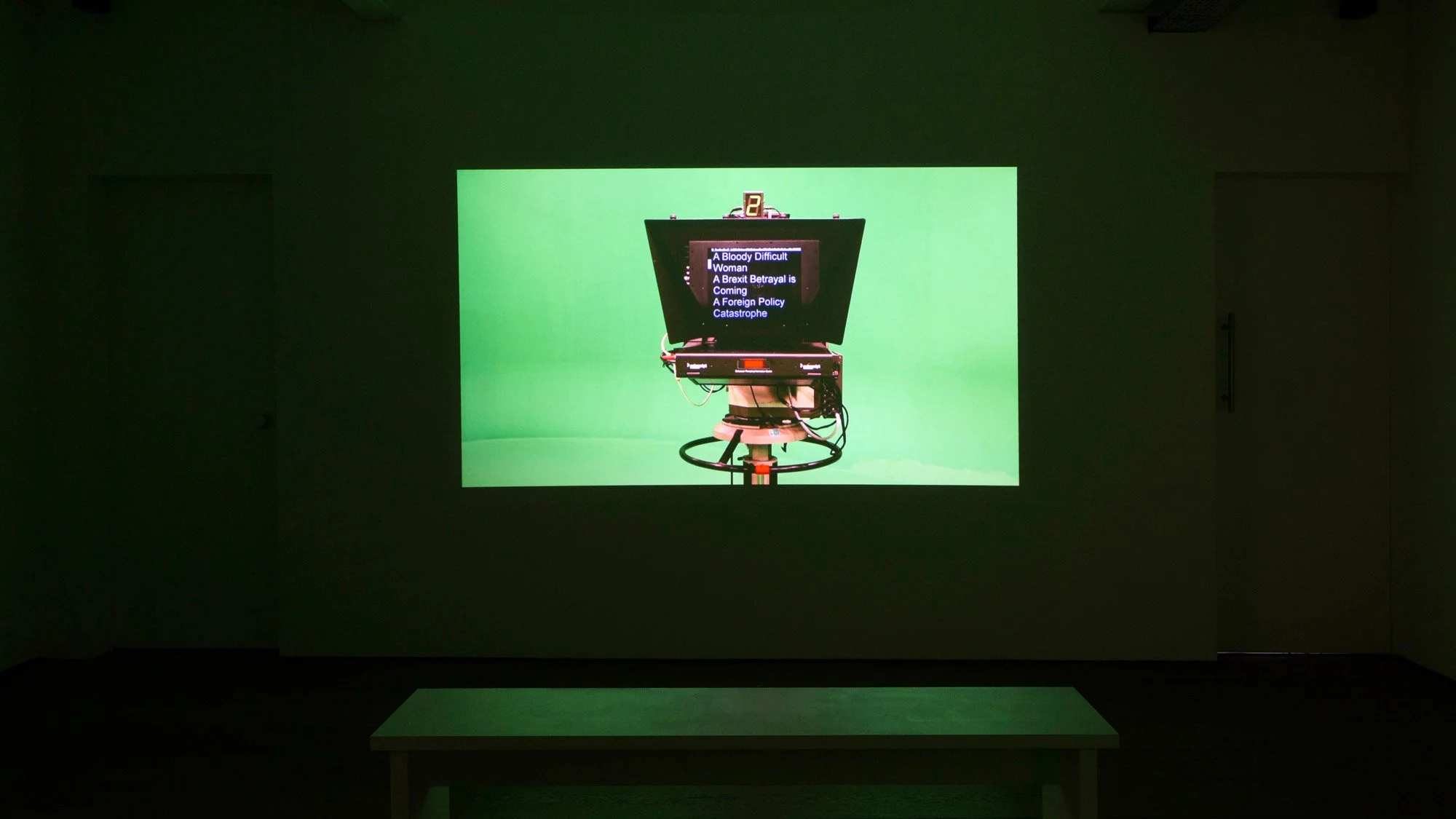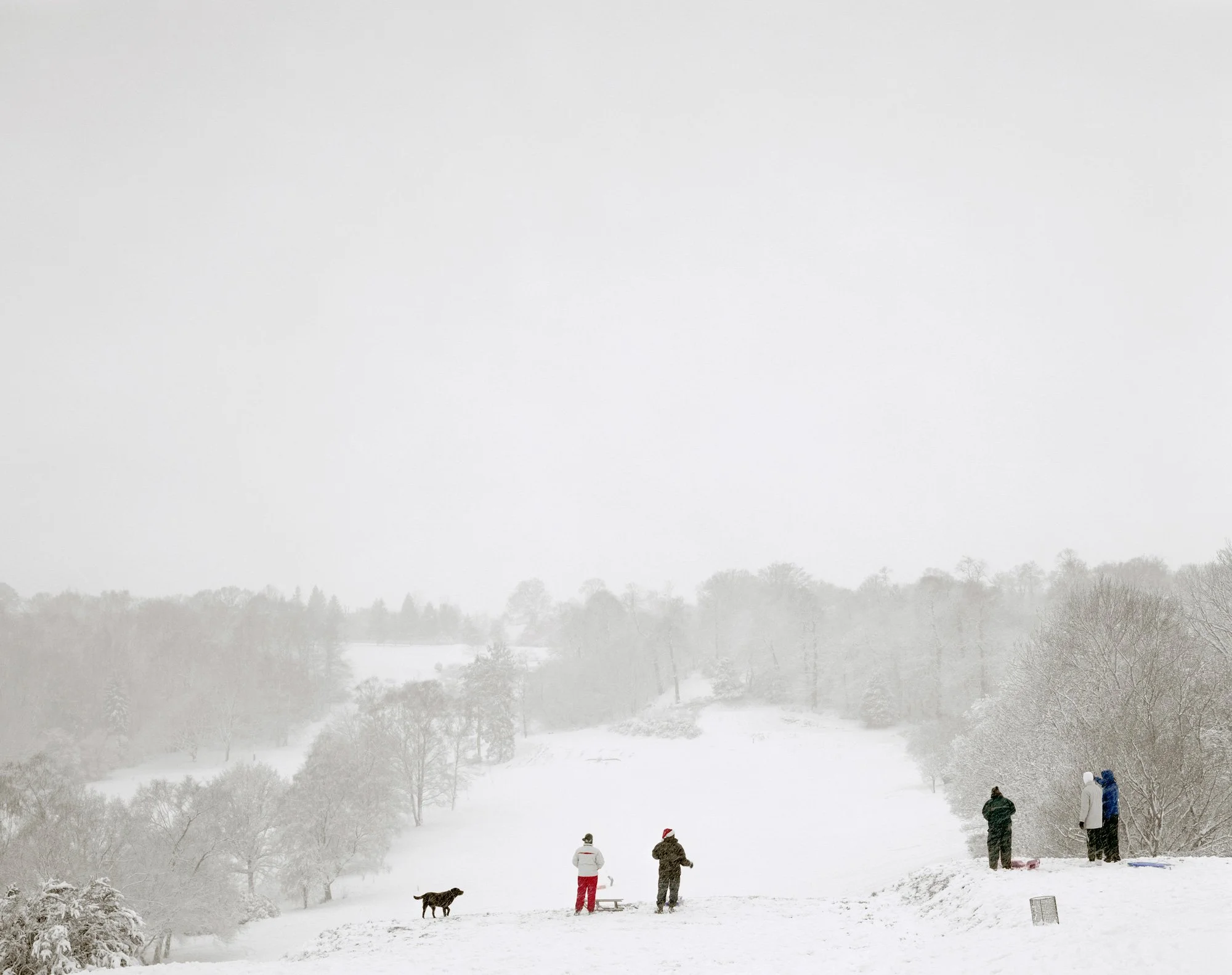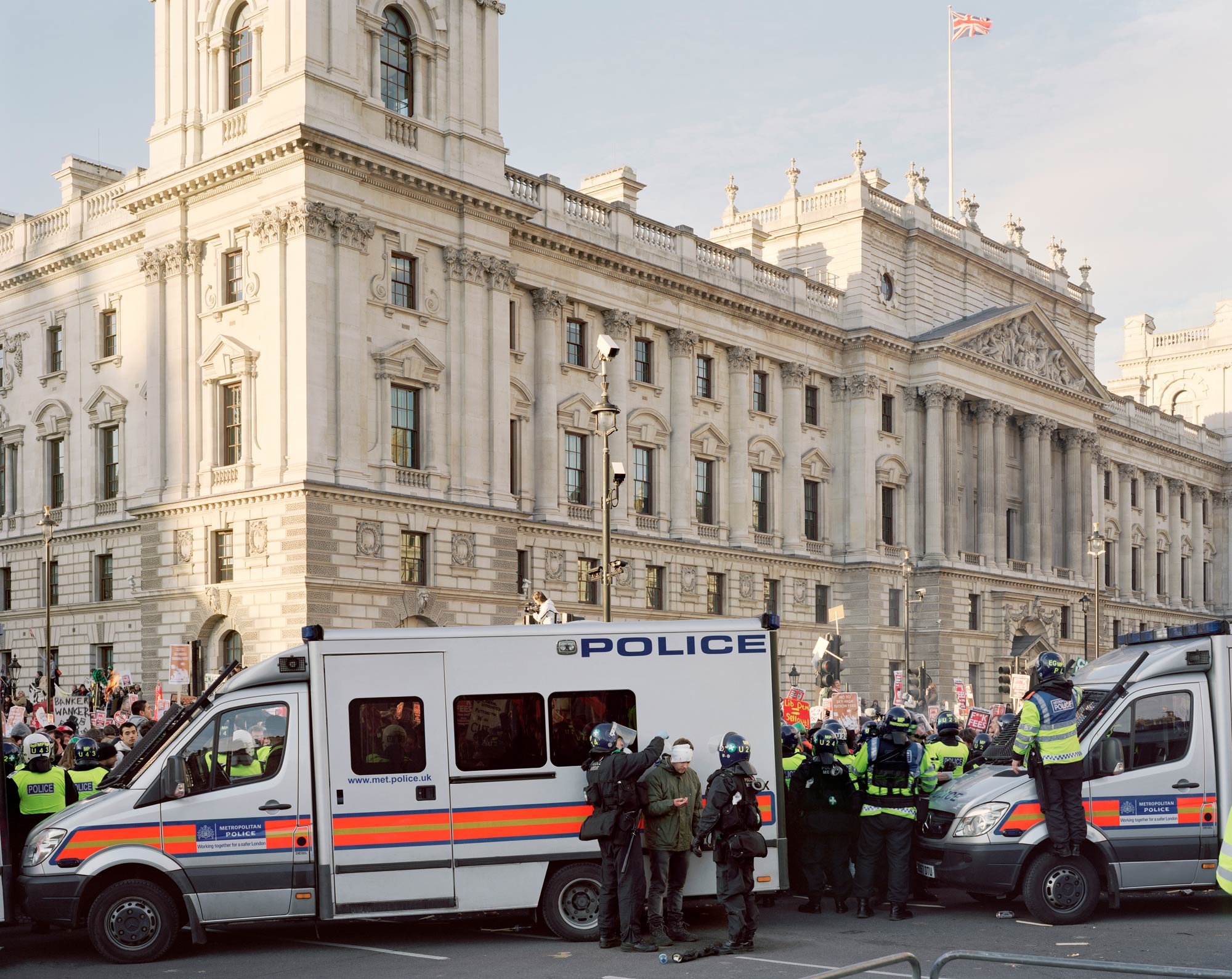Simon Roberts Captures a World in Transition
Simon Roberts (b.1974) is a visual artist based in Brighton, UK. Widely recognised for his large-format, tableaux photographs of the British landscape, his practice also encompasses video, text and installation work, which together, interrogate notions of identity and belonging.
He has exhibited widely and his photographs reside in major public and private collections, including the George Eastman House, Deutsche Börse Art Collection and Victoria & Albert Museum. In 2010 he was commissioned as the official British Election Artist by the House of Commons Works of Art Committee. He is the author of several critically acclaimed monographs including Motherland (2007), We English (2009), Pierdom (2013) and Merrie Albion - Landscape Studies of a Small Island (2017).
© Paul Chambers
HM: Simon, looking at your pictures, I have always admired your work and the way you’ve carried it through the years. There’s a consistency and a special quality that sets your photography apart. You’ve really put yourself into a very interesting place creatively. Let me begin by asking: were you always destined to be a photographer? Did you know from the start?
SR: Not exactly. Photography came into my life quite early, but not in a professional sense. My dad was a keen amateur photographer, and he often treated us to long slide shows of his Kodachrome pictures on Sunday afternoons. That ritual gave me a visual backdrop growing up, even though neither of my parents worked in the arts. My father worked in IT, and my mum was a full-time homemaker, working tirelessly at home.
The real turning point came when I was about 14 or 15 and received a camera as a Christmas gift. From then on, I discovered this outlet for an instinctive interest in images, and it quickly grew into something of an obsession during my teens.
Southend-on-Sea Pier, Essex, October 2001
From the series, Pierdom
© Simon Roberts / courtesy of the artist
HM: That’s fascinating. So even though it started early, you didn’t pursue it academically?
SR: Exactly. I didn’t study photography in a formal sense. At university I studied human geography, a social science, and for a while I actually drifted away from photography. I became more drawn to film. For a time, I imagined myself working in cinema, maybe as a director.
But after graduation I realized I couldn’t imagine myself in what you’d call a “normal job.” I needed something else—something that allowed for expression. I decided to give photography a serious try, and things moved faster than I could have hoped. About a year later, I won the Ian Parry Award, which was a crucial turning point. It allowed me to move to London and begin working with The Sunday Times Magazine. There I worked alongside Aidan Sullivan, who became a significant mentor to me.
Those years—the late 1990s and early 2000s—were formative. I worked mostly in editorial photography, cutting my teeth on assignments, learning from editors, and gradually finding my voice.
HM: It’s always interesting to hear how people arrive at photography. For some, it’s a calling from a very young age; for others, it comes much later. In your case, you’ve mentioned that film played a role. Can you tell me a bit more about how that crossover happened?
SR: Absolutely. At school I did a work placement at a film company, shadowing the Director of Photography. At that point I was very much drawn to cinema and had this grand idea of becoming a film director. I asked the DOP what the first steps should be, and his answer stuck with me: “A good DOP is really just someone who can link a series of still images together.”
He encouraged me to think of photography as a foundation—something that could build my narrative skills, my ability to tell stories with images. That advice was transformative. I picked up a camera with the mindset of storytelling, and before I knew it, I was completely absorbed. Over the years I’ve dipped back into moving image projects now and then, but never to the extent I thought I would back then.
Brighton West Pier, East Sussex, April 2011
From the series, Pierdom
© Simon Roberts / courtesy of the artist
HM: Do you remember your first encounters with the professional side of photography—meeting editors, trying to break in?
SR: Oh yes, vividly. I remember visiting picture editors with my portfolio and having this almost overwhelming moment. Behind one editor’s desk was a huge wall covered with postcards and cards from other photographers. I looked at it and thought: I’m just one among hundreds, maybe thousands, all trying to be noticed.
That realization was sobering but also motivating. It pushed me to ask myself: what makes me different? What do I have to say? It was a period of both humility and determination, trying to carve out a place in such a competitive field.
The Brexshit Machine
Flowers Gallery London, 2021
© Simon Roberts / courtesy of the artist
HM: Simon, in your early years you were entering a competitive editorial world. How did you first manage to stand out and get editors to notice you?
SR: I realized quite quickly that if I just turned up with a portfolio and asked for work, I was one among hundreds. But if I arrived with an idea—something researched, something concrete—I wasn’t only asking, I was offering. Editors would see that I was motivated, that I was thinking beyond the single image and proposing a narrative. That’s when doors started to open. I’d pitch a story, and if one was commissioned, it often led to further assignments.
By the late 1990s, I took it a step further. Alongside my friend Greg Williams, I co-founded an agency. At that time, email was becoming reliable, the first dot-com boom was underway, and we realized we could bypass traditional foreign agents. Instead of relying on others to sell our stories abroad, we could syndicate directly to international magazines—Stern, Paris Match, the South China Morning Post. Suddenly a single story could generate multiple streams of income. That model meant I didn’t need dozens of small commissions; I just needed a handful of strong, well-researched stories.
Between the late ’90s and 2004, that was my rhythm: coming up with unusual story ideas, executing them, and then syndicating widely. The subjects ranged from a pyromaniac festival in the Nevada desert, to monks from the Bronx running a basketball club for East London street kids, to leopard hunts in Botswana, to sword-fighting societies at German universities. It was eclectic, sometimes strange, but it was mine.
Alongside these self-generated projects, I took on more standard commissions—portraits, features, even some advertising—but the real drive was always my own stories. From early on, I knew I wasn’t content just illustrating someone else’s idea. What excited me was creating my own narratives, shaping the stories I felt needed illumination.
The Brexit Lexicon
Flowers Gallery London, January 2019
© Simon Roberts / courtesy of the artist
HM: That independence clearly shaped your direction. But in 2004 you made a big leap—moving to Russia. What pushed you to that decision?
SR: My wife and I were at a crossroads. We were talking about starting a family, but we also wanted one more grand adventure before being tied down. I was also restless. As exciting as editorial stories were, they lived and died within the pages of a magazine. Once published, they vanished. I began to crave a different kind of permanence—something that could exist as a body of work, a book.
So in 2004 we set out across Russia. For a year we traveled from one end of the country to the other, and that journey became Motherland. The book, published by Chris Boot in 2007, was a turning point. Suddenly I was working with galleries, exhibiting, and selling prints. More importantly, I had autonomy. I could reclaim authorship from the picture editors and art directors. Motherland made me realize that books could anchor my work, give it longevity, and frame it within a broader conversation.
Police road safety sign, Magadan. Far East Russia, August 2004
From the series, Motherland
© Simon Roberts / courtesy of the artist
Abandoned warship in the Kola Bay, Murmansk. Northwestern Region, January 2005
From the series, Motherland
© Simon Roberts / courtesy of the artist
HM: Tell us about this extraordinary experience—your trip to Russia that became Motherland. How was it? What happened along the way?
SR: It was epic in every sense of the word. Looking back now, it feels almost impossible to imagine doing it today. Russia has changed so dramatically under Putin. The control of movement, restrictions on foreigners, and the near-complete absence of free media would make such a project inconceivable now. At the time, there were already restrictions, but nothing like what exists today.
What struck me then was the sense of innocence and hope. For the first time in decades, Russians could put money in a bank and trust it would still be there tomorrow. The ruble was relatively strong, the economy was opening up, the internet was beginning to take root, and there was a palpable feeling that things were improving after the chaotic years of the oligarchs. It was still early Putin—there was some semblance of free media, though even during our travels we could see those freedoms slowly eroding.
Zhenya and his pregnant fiancée Mia, Yakutsk. Eastern Siberia, November 2004
From the series, Motherland
© Simon Roberts / courtesy of the artist
Ballroom dancers, Nikita and Rufina, Omsk. Western Siberia, May 2005
From the series, Motherland
© Simon Roberts / courtesy of the artist
Port officials, Vladivostok. Far East Russia, October 2004
From the series, Motherland
© Simon Roberts / courtesy of the artist
HM: And how did you approach the journey itself?
SR: We traveled in four long journeys, each lasting around three months, radiating out from Moscow. We crossed to almost every corner of the Russian Federation: Kaliningrad in the west, the Far East, the Arctic north, and down along the borders of Mongolia and China. We even went to Chechnya not long after the war there, when Grozny was still devastated. The Beslan school siege had just happened. It was an extraordinary, fragile moment in Russian history.
What made the experience so powerful was the freedom I felt. I wasn’t working to commission. There were no editors or clients dictating what the work should be. I could simply respond to what I saw, photograph as I felt, and allow a visual voice to emerge. That kind of creative autonomy was formative—it shaped how I would approach all my later projects.
Camping with Sasha and Paval, Kamchatka Peninsula. Far East Russia, October 2004
From the series, Motherland
© Simon Roberts / courtesy of the artist
Taxis cross the frozen Lena River, Yakutsk. Far East Russia, November 2004
From the series, Motherland
© Simon Roberts / courtesy of the artist
HM: What do you feel when you look back at Motherland today?
SR: It remains one of the works I’m most proud of. Of course, with hindsight, there are things I might have done differently, but as a body of work it feels strong and cohesive. What has been especially meaningful to me is how Russians themselves have responded to it. Many have told me it captured something essential about their country at that time—a mood, an atmosphere, even a certain tenderness.
But looking at it now is painful. I think about the children I photographed back then. Where are they now? Some might be on the frontlines in Ukraine, conscripted into a war they didn’t choose. Others may have fallen under the heavy machinery of state propaganda. The absence of free media, the relentless narrative of the “evil West” that Putin’s regime has cultivated—it makes me wonder what became of those young faces. The work has taken on new, unintended layers of meaning because of how history has unfolded since.
Holidaymakers onboard the Afanasy Nikitin cruise ship, Volga River. Volga, June 2005
From the series, Motherland
© Simon Roberts / courtesy of the artist
The lounge of a former sanitorium, Sludyanka. Eastern Siberia, November 2004
From the series, Motherland
© Simon Roberts / courtesy of the artist
HM: And then came We English, which felt like a very different kind of project—turning the lens inward, onto Britain. How did that come about?
SR: After Russia, I felt it was time to look closer to home. I’d spent years flying around the world, documenting “other” places, and I realized I’d neglected England itself. There’s a rich tradition of British photographers exploring the landscape and psyche—Tony Ray-Jones, Paul Graham, Martin Parr, Trish Murtha. I wanted to contribute to that dialogue.
The timing was uncanny. We landed back in England on July 7, 2005—the day of the London bombings. That shock exposed a country in flux. Questions of identity, devolution in Scotland and Wales, debates about multiculturalism—all of it felt urgent. Then came the 2008 banking crisis, austerity, and a shifting sense of who we were as a nation. We English was conceived against this backdrop.
So once again, my wife and I set out—this time with our two-year-old daughter—and traveled the length of England. It was another epic journey, but with a different spirit. Where Motherland was about an exotic elsewhere, We English was about the familiar rendered strange. Published in 2008, it captured a moment just before everything fractured—before Brexit, before the polarization that defines Britain today. Looking back, it almost feels like a portrait of innocence, a country on the cusp of change.
Keynes Country Park Beach, Shornecote, Gloucestershire, 11th May 2008
From the series, We English
© Simon Roberts / courtesy of the artist
Cotswold Water Park, Shornecote, Gloucestershire, 11th May 2008
From the series, We English
© Simon Roberts / courtesy of the artist
HM: When you look back at We English now, and at Britain today, what do you see?
SR: In some ways, We English captured a last collective breath before the storm. Immigration, austerity, devolution—these were bubbling under the surface, but they hadn’t yet torn us apart. Since then, of course, Brexit has been the great rupture.
I still find it astonishing. I had friends—intelligent, thoughtful people—who supported Brexit, and I could never quite understand it. To me it was always a campaign built on illusion, on a misplaced nostalgia for empire. The Leave campaign sold hope, even if false, while the Remain campaign leaned on fear. That was never going to resonate.
Now the consequences are clear. Britain walked away from 40% of its export market, walked away from influence inside Europe, and found itself isolated—an island in the Atlantic with diminished voice. From my perspective, it was a kind of national self-harm. And yet, as with so many political shifts, it revealed the deeper divides that had long existed beneath the surface.
HM: Hearing you talk, it feels as though your projects are always tightly connected to history—not just documenting it, but trying to understand its undercurrents. Do you see yourself more as a photographer or as a chronicler of social change?
SR: I’d say both. The images are what draw people in, but for me the heart of photography is research, curiosity, and narrative. Every project begins with questions: What is happening here? What does this tell us about who we are? The photographs are the means, not the end. If I’m doing my job well, the work outlives the headlines and contributes to a deeper conversation.
Derby Day, Epsom Downs Racecourse, Surrey, 7th June 2008
From the series, We English
© Simon Roberts / courtesy of the artist
The Haxey Hood, Haxey, North Lincolnshire, 5th January 2008
From the series, We English
© Simon Roberts / courtesy of the artist
HM: We English struck me as a very different book compared to Motherland. It was about leisure, about how people use the landscape and the places that become meaningful. Looking back now, how do you see it?
SR: In many ways, We English was about leisure, yes, but more deeply it was about belonging. It was about the ways in which people make meaning through landscape—whether at the seaside, in the hills, or on a cricket pitch. These places hold memories, traditions, and emotions that together form a portrait of national identity.
And I don’t think that has fundamentally changed. Look at what happened during COVID: as soon as the first lockdowns eased, people flooded to parks, beaches, mountains. They went to places of memory and comfort, places that could provide release. That instinct hasn’t changed; it’s hardwired. What We English showed is that landscapes aren’t just backdrops—they are active spaces of memory and culture.
Tandridge Golf Course, Oxted, Surrey, 2nd April 2008
From the series, We English
© Simon Roberts / courtesy of the artist
Ratcliffe-on-Soar Power Station, Nottinghamshire, 16th June 2008
From the series, We English
© Simon Roberts / courtesy of the artist
HM: And then came Merrie Albion - Landscape Studies of a Small Island, which feels more political, more unsettled. What was your aim with that book?
SR: Merrie Albion, published in 2017, brought together a decade of work between We English and Brexit. Whereas We English had a sense of innocence—even optimism—Merrie Albion was about unease, frustration, and tension.
I began looking more at urban landscapes, places of protest, sites of conflict around immigration, economics, or even local nimbyism. Every landscape is loaded with other ideas—whether political, social, or historical. That was what I wanted to capture: how Britain was shifting, and how fragile that sense of national identity had become.
The book’s final picture was taken on the very day Article 50 was signed—Britain’s formal notice to leave the EU. For me it felt like signing our own death warrant. Merrie Albion became, unintentionally, a chronicle of that slide from innocence into fracture.
Beachy Head, Seven Sisters Country Park, East Sussex, 24 March 2017
From the series, Merrie Albion - Landscape Studies of a Small Island
© Simon Roberts / courtesy of the artist
Stone Cross St George’s Day Parade, Dartmouth Park, Birmingham, West Midlands, 25 April 2010
From the series, Merrie Albion - Landscape Studies of a Small Island
© Simon Roberts / courtesy of the artist
‘Vote Leave’ Campaign, South Street Square, Worthing, West Sussex, 15 June 2016
From the series, Merrie Albion - Landscape Studies of a Small Island
© Simon Roberts / courtesy of the artist
HM: Your visual style also seemed to change. Why was that?
SR: For We English, I had set myself very strict parameters—high viewpoints, wide tableaux, small figures in vast landscapes. It was a deliberate visual system, a way to make the work coherent as a kind of national survey.
But after Brexit, I felt the need to break those rules. For one thing, Brexit was hard to photograph. There was no clear visual symbol. So I experimented with video, audio, even photographing empty spaces. I spent time in ancient forests making melancholy pictures—an escape from my fellow countrymen who had voted for Brexit. Later, during COVID, I shifted again: working with cyanotypes, photographing sculptures in the V&A, trying to find alternative forms to keep addressing contemporary issues.
For me, the medium should always serve the story. If that means a book, fine. If it means video installation, fine. The point is to keep searching for the form that communicates the idea most truthfully.
National Campaign Against Fees and Cuts, Parliament Square, London, 9 December 2010
From the series, Merrie Albion - Landscape Studies of a Small Island
© Simon Roberts / courtesy of the artist
Battle of Britain Memorial Flight, Shoreham Air Show, West Sussex, 15 September 2007
From the series, Merrie Albion - Landscape Studies of a Small Island
© Simon Roberts / courtesy of the artist
HM: You’ve spoken about the challenges facing photography today—AI, collapsing media, shrinking cultural spaces. Do you feel pessimistic or optimistic?
SR: Neither. I’d say realistic. Every generation of photographers has faced seismic change—the arrival of the internet, the transition from film to digital. Now it’s AI and the collapse of traditional media and advertising models. These are enormous shifts, yes, but not the end of creativity.
I actually think the threat of AI is exaggerated. Much of it is being hyped by big tech companies. Yes, it will change the economy, but it won’t wipe out creativity. If anything, it will make creative thinking, lateral problem-solving, and entrepreneurship even more valuable.
That’s why I’m starting a photography and art centre in Brighton. I want to create a space where the next generation can experiment, collaborate, and support one another. Too many cultural venues are closing; too many outlets for showing work are disappearing. We need to keep spaces open, to keep the creative candle burning.
Equestrian Jumping Individual, Greenwich Park, London, 8 August 2012
From the series, Merrie Albion - Landscape Studies of a Small Island
© Simon Roberts / courtesy of the artist
Download Festival, Donington Park, Castle Donington, Leicestershire, 13 June 2008
From the series, Merrie Albion - Landscape Studies of a Small Island
© Simon Roberts / courtesy of the artist
HM: That idea of struggle seems important—of not waiting for permission.
SR: Exactly. Nobody owes artists anything. If you choose this path, you have to find ways to make it work. In some countries there used to be generous stipends for artists, but those often produced mountains of mediocre work. Struggle is part of the process. It forces you to be inventive, to be entrepreneurial, to push harder.
Art isn’t about being handed comfort. It’s about the fight to create something meaningful, to keep telling stories despite the obstacles. That, to me, is the essence of why it matters.
POST will house affordable artist studios, a community B&W darkroom, a photographic studio, an exhibition and events space, a hot-desking zone, and a library. post-creatives.co.uk



























